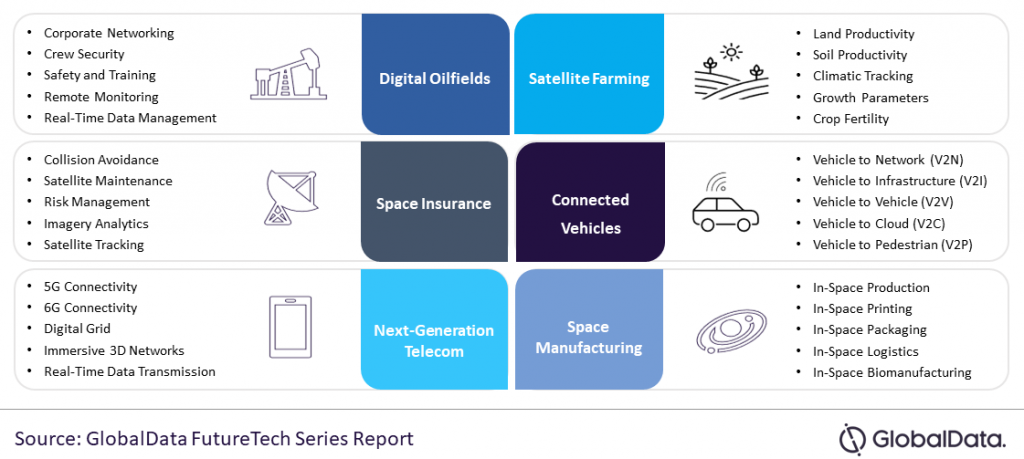The new space race focuses on satellite Internet with a promise of higher speed and lower latency for industrial and business-oriented communication applications. As the connectivity revolution gathers momentum, low earth orbit satellites (LEOs) penetrate innovative application areas due to superior performance and positioning compared to geostationary and middle earth orbit satellites in remote tracking, climate monitoring, and inter-vehicular networking, according to GlobalData, a leading data and analytics company.
GlobalData’s FutureTech Series report, ‘Internet from Sky: Can LEO Satellites Transform the Future of Connectivity?’, reveals the futuristic latency-critical applications of LEOs as the technology widens its global footprint.
Kiran Raj, Principal Disruptive Tech Analyst at GlobalData, comments:“Venture capital (VC) deals in the LEO space witnessed a massive rise in 2021 with nearly 650% year-on-year growth. An unprecedented level of this funding is flowing into the space economy, beyond satellite communications, into ventures to drive creative concepts and versatile use-cases.”
Sanchari Chatterjee, Senior Disruptive Tech Analyst at GlobalData, notes: “Post COVID-19 pandemic, LEOs could be potentially critical to offer lightning speed broadband services, tracking of assets, securitizing data, and strengthening the network infrastructure to provide communication resilience in digital oilfields, satellite farming, and connected vehicles.”

Digital oilfields:
LEO technology can offer ubiquitous connectivity to remote onshore and offshore oil fields enabling oil and gas companies to enhance their digital capabilities, machine learning, and security initiatives at remote facilities. Australian IT service provider Speedcast conducted an oil and gas industry performance testing of Telesat’s Phase 1 LEO satellite using data provided by a Brazilian petroleum company Petrobras.
Satellite farming:
Spectral imaging offered by LEOs can assist farmers to record land productivity and soil health to improve their decision-making for crop cultivation and product marketing. Farmers can also track the climate, soil conditions, and growth parameters of crops using data from LEOs. US-based agro giant John Deere is investigating the potential of LEOs in agriculture to assist farmers in rural areas with high-speed broadband connectivity.
Connected vehicles:
LEO satellites promise fast-paced networking to support automotive emergency response situations, content software distribution to cars, inter-vehicle connectivity, and a host of compelling features in armored luxury vehicles, missiles, mining vehicles, agricultural unmanned vehicles, and autonomous vehicles. Chinese automaker Zhejiang Geely Holding plans to investigate a network of LEOs to navigate its fleet of cloud-connected cars.
Chatterjee concludes: “Apart from the investment scenario, the surge in IP activities in the last few years also contribute to more in-space tracking, monitoring, navigational, and even manufacturing initiatives to set the stage for a wider deployment of LEOs infrastructure across various industries.”
Source : GlobalData







Be the first to comment on "Low earth orbit satellites fuel next space race for mission-critical applications"